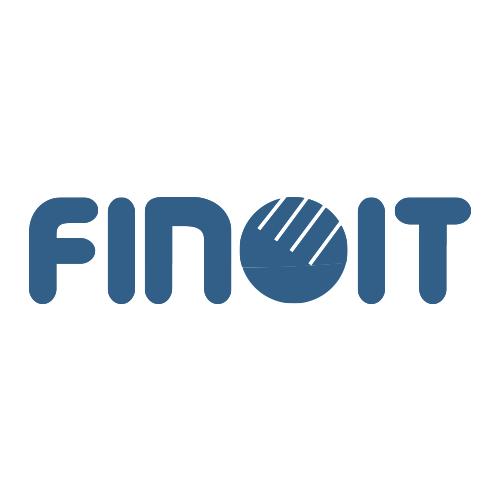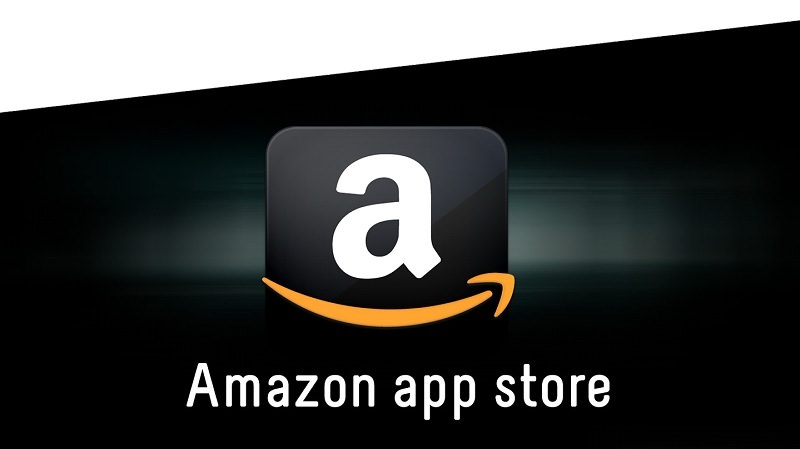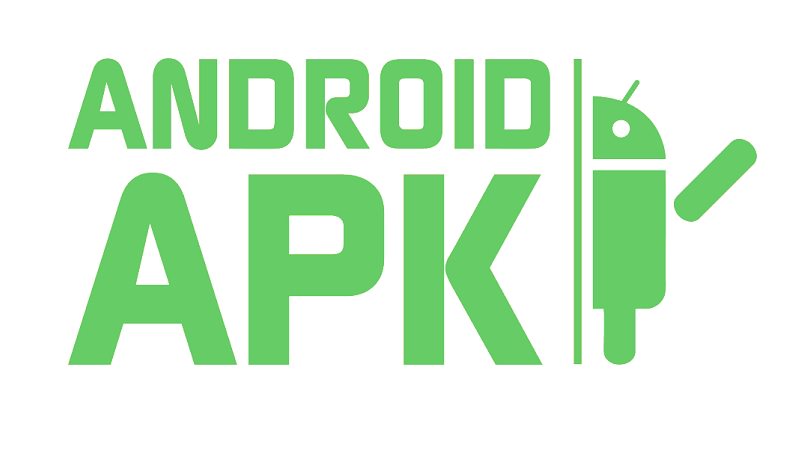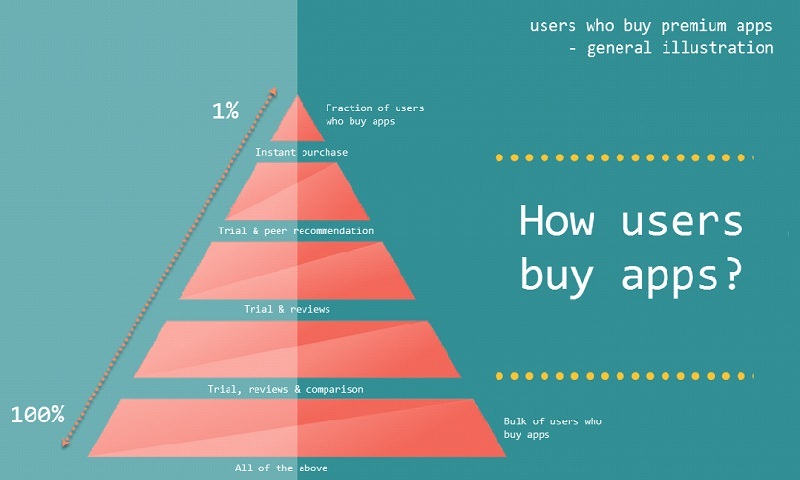5 Lesser-Known Ways to Promote Your Consumer Mobile App

So you’ve finally developed your mobile app and are all in readiness to introduce it to users, the world over? Congratulations. But before you push things live, have a look at these thought-provoking stats:
Leading app stores are, already, bloated. As of September 2017, there were more than 3.3 million apps on Google Play Store and over 3 million on Apple App Store. More than 1,000 apps are added to both these platforms each day.
These numbers are pretty overwhelming, and only increasing day in day out. So just in case you are sitting around at ease, hoping app users will automagically navigate to your app – well, give it a second thought!
The intensity is high; there’s formidable competition, and it’s only going to get strenuous from here on.
Unless you efficiently market your consumer app to your target audience, it will be lost in the crowd of other apps out there – no matter how ingenious your product is. That’s the reason we suggest having a well-worked-out app user acquisition strategy in effect to launch your app and to treat it like any conventional product launch.
If you haven’t done that, need not panic! We’ve already done the hard work for you. We’ve been into the game of mobile app marketing long enough to understand what works and what doesn’t.
Here’s a list of 5 lesser-known ways to promote your consumer app for startling results. This list is in no particular order so you can choose the ideas that best complement your existing marketing plan.
Here we go!
1. Submit your app to the Amazon Appstore for Android
You may think that Android apps can be downloaded or installed from just the one source, i.e. the Google Play, but that’s nothing more than a false notion. Unlike Apple, Android apps can be accessed from more than one authorized store.

While most Android devices come with Google Play, which is by far the default app store platform for most Android users, let’s not forget that there are several other Android app stores available out there, including the behemoth Amazon Appstore and Samsung Appstore.
Kindle tablets are shipped with Amazon Appstore onboard instead of Google Play, but Android users can use it, too! That’s the reason, any leading mobile app development companyrecommends its clients to get their app listed on Amazon app store for extended reach, web penetration and visibility.
Submitting your app to Amazon Appstore will unlock a landslide of exposure to your app’s listing page out there. And in marketing, more exposure always means more chances of conversion. Submitting your app to Amazon Appstore has several other benefits, such as:
- High revenue per active users
- Making a paid app free (see point 4)
- International distribution
- Allows users to test run the apps, which helps promotion, big time
- Fast developer support
- App review process to ensure your app doesn’t get caught between spam and low-quality apps
- Great checkout process (unlike Play Store) to ensure users don’t fail to go through the buying process
- Rapidly-mushrooming platform with cross-selling opportunities through search results across amazon.com
- Unlike Google Play, the Amazon Appstore helps developers target specific audience
Moreover, like Mobogenie’s forthcoming monetary incentive for app developers, several app stores run lucrative promotions to entice the developers, so you can expect a small but sure second stream of revenue.
Start by reading the quick start guide to Amazon Appstore and capitalize on the exquisite benefits it has on offer.
2. Third-party apk/ipa libraries go where app stores can’t
You must have surely noticed a host of third-party download portals on the web that offer installable (executable) apk and ipa files for Android and iOS, respectively
Submitting your executable installers to these websites truly comes handy, and here’s how:
The majority of these sites have robust SEO as their USP.
One, these websites do all the hard work themselves, saving your time and money as maintaining and promoting your own website is a lot of extra drudgery that you perhaps don’t need desperately.
Two, search optimizing your app on app stores (ASO) delivers far less apparent results over time, probably due to the high altitude of competition, as compared to the SEO results these websites garner for your niche keywords.

Three, unlike the official app stores, these third-party sites are more fervent and frantic to improve the reach and visibility of your app on SERPs, since they efficiently publicize your app for you in quest of selling advertisements on the back of it. That’s their revenue model and, therefore, you can’t even have a pinch of doubt on their constancy, they look to promote your app the same way they’d have promoted theirs.
Also, these third-party sites run on a two-way trail. They look to promote every single page of their website to its maximum extent, while even most app users prefer to download apk or ipa file of any app and save it on their device for future use in case the app malfunctions, they hard reset the device, or the app gets uninstalled accidently. It saves them both time and data.
This way you get a new lease of life as far as app promotion is concerned.
3. Making a paid app free
Consider rolling out a free, limited-access or limited-time trial version of your app, in case your app is otherwise paid.
Not having a free version means you’re hitting the top of the sales pyramid, which corresponds to only a fraction of app users who purchase premium apps without giving them a dry run, meaning your app will get a cold shoulder by the bulk of Android users who make buying decisions based on several factors, including their experience with the app during the free trial period.

Here’re some fascinating stats pertaining to paid apps (fourth one is a killer).
A research report from Custora reveals that:
- iOS users buy more stuff than Android users – it may have something to do with the kind of people who purchase Apple products. They are pickier, self-selecting, and generally have money to spend.
- iPad and iPhone users make up 78% of mobile purchases, while Android users account for only 22%.
- App Store brings in 75 percent more revenue than Google Play despite the substantial difference in the number of downloads.
- iOS users tend to spend as much as 2.5x more than Android users on in-app purchases.
Why should I care?
These figures can come handy for you to plan your app’s revenue model. Try to roll out free apps, more often than not, and tweak your monetization strategy to focus more on in-app purchases, specifically when developing for iOS.
With no trial option on offer, your app will be downloaded and installed by far less number of people than those who would’ve downloaded and installed it, had it been free or free-to-try, multiplying your chances of conversion and in-app purchases in the longer run. And no surprises, not everyone buys something without knowing what it is and what it is for!
Look to stick to the old good marketing thumb rule, “what gets seen, gets sold.”
Providing a free trial means the users will look to explore the content and features of your app, how it works, how well it works, how effective it is than other similar apps, and other alike things.
While a trial version with a few premium features in locked mode will generate curiosity to inspire buying decisions, a full-functional limited-time trial might help users understand how useful your app is and why they should go make a purchase of it.
Tip: One of the most infuriating things about the Google Play is that it doesn’t allow you to put a paid app free, thence restricting you to do promotions which may give you more exposure, ratings and downloads. In such event, the Amazon Appstore can suffice your needs, you can put your app free for a moment then switch back to the paid mode.
4. Reach out like Mr. Marvelous
Don’t entirely be contingent on app stores, else you’ll be nothing more than handicapped. Sail through the affluence of information Google has on offer, it can help you strike the purple patch with your mobile app on any given day.

Here’re the 3 best ways to extend your outreach for app promotion:
- Pitch tech blogs
- Contact writers in the niche
- Get influencer or celebrity endorsements
Though it might look a touch on the tougher side, getting others involved in your marketing endeavors can deliver benefits more than one.
Consider reaching out to tech blogs or bloggers who care to write things in line with the niche of your app. As revealed by award-winning CMO Patrick Mork, “Getting people to write about your app improves your search rankings in the Play Store.” Any leading mobile app development company will suggest its clients to adopt best industry practices when it comes to mobile application marketing for consumer apps through celebrity endorsement, influencer marketing and tech blogging in general.
You might also like to connect with celebrities or key influencers in your niche. These people have large fan following and, their single tweet can outwardly balance your months of marketing efforts, exposing your app to a swarm of obsessed fans who almost blindly follow these celebrities and influencers, word-by-word.
There’s no formula in isolation to ensure these writers are convinced by your product and your proposal makes sense to them. While you may consider that you have a blockbuster app launch tomorrow, other might be less excited. Don’t despair. Tabulate the contacts, shoot them an email with your perfect pitch, and keep your fingers crossed.
At times, a decent proposition can earn you an endorsement in the form of a guest post, a featured listing, a banner ad, a tweet, whatever, while you may also look for quality blogs that publish sponsored posts at competitive rates, or register with an online influencer platform to find key influencers at decent prices.
However, you must expect a cold or no response from most of these recognized blogs and writers. It’s ordinary and you must never ever be discouraged by it, simply move on with your proposition to the next blog or writer on your list. You’ll have your share of luck, rather sooner than later. Should your breathtaking product influence them, you can expect them to write about it, or feature it on their platforms.
Remember: Don’t be pushy – you’ll never want to burn bridges with authority writers.
How to search for authority blogs to get your app featured
While submitting your app on app stores, you must have surely used some keywords for search optimization to ensure your app gets found when people search for those keywords. Run a Google search for those keywords and analyze the SERP.
If your prime keyword is (say) ‘best music android apps’, you can observe that 4 of the top 5 results as shown in the picture below are authority blogs that can be contacted with a proposal to get your app featured.

If you strike this spot right and odds favored you, you may expect moving more than a few spaces ahead with just a single throw of the dice. Getting your consumer app featured on authority blogs can deliver some serious long-term benefits, such as:
- Exposure
- Targeted traffic
- Powerful link-building
- Rating & reviews
5. App Store Optimization – How much is enough?
Consider app store optimization as the SEO of mobile apps. Though the ASO concept has been around since the beginning of the ‘app age’ and is certainly no novelty or lesser-known way to promote an app (as is the theme and agenda of this blog post), we still resolved to include it in our list of top 5 lesser-known ways to promote a mobile app.
Reason?
ASO is no rocket science; but then, it has been observed time and again that even the best app publishers succumb to inappropriate, spammy, inadequate or exaggerated ASO techniques – leading to despair and loss of more than just the invested time, money and resources.

Deprived ASO strategies can play an absolute carnage for your app’s position and future on app stores, for the least. With more than 50% of iPhone users in the US finding mobile apps through search engines, your app description is beyond measures the most important thing you should look to focus on in your consumer app marketing efforts.
To thrive amidst blazing competition and surmount scores of similar apps out there, your ASO needs to be rock-solid and gilt-edged – and it hardly demands financial buffer to be able to land things in the right spots. Here’re a few points to ponder when it comes to implementing an ASO strategy:
1. Create an app icon that can magnetize eyeballs.
With more than 3.3mn apps on Google Play and 3mn on Apple App Store, there’s already an overdose of noise in whatever category you choose for your app. Due to this clatter, most users choose to invest their interest and time in apps, only if the app icon entices them.
To make your app icon get noticed and stand apart from the competition, it should:
- Have a unique shape
- Have limited pallet of colors – 2 is just enough to create a contrast
- Avoid using an image – it over-blends!
- Avoid too much of text, it’s scarcely readable in any case
- Be creative!
2. Understand your customers and competitors
3. Choose an arresting, self-explanatory and easy-to-pronounce name
4. Max out your keywords
App Store offers a 100-character field while Google Play gives 4,000 characters; make the most of them, and use keyword density to perfection.
5. Create a captivating description that stirs curiosity
6. Include screenshots and videos
By screenshots, we mean the finest captures that entice users and explains your app objective, no random or bizarre screenshots that are not in sync with one another.
7. Localize your app listing
8. Develop product page backlinks with off-page promotion
9. Understand platform difference
When it comes to the work that can be done inside the actual app store, there are quite a few dissimilarities between Android and iOS app stores. Though the fundamentals remain the same, recognizing and leveraging the end-to-end differences between the two leading app stores can boost your chances of making the app more discoverable. Have a look:
Google Play:
- The app name can have a maximum of 25 characters
- Description is the most important aspect of keyword optimization
- Organically repeat the app name 3 to 5 times in the app description
- Integrate Google Plus
- When linking to Google Play’s app listing, use keywords within the link (URL) itself.
Apple Store:
- When using IAP (in-app purchase) ensure to give the IAP some meaningful name to exploit keywords in this region
- Ensure you have 5 good reviews, a bare minimum
- Make the app title highly keyword-rich
- Review the keywords each time you update your apps.
10. Use app indexing to drive traffic from SERPs
11. Translation/Transnation
While a huge part if the world speaks English and app stores mostly cater to the US audience, the true-blue fact is that the majority of the world does not speak English. Why would you disregard this massive, potential market for your mobile app?
Research backs it up: Did you know that just 31 percent of the total fiscal app revenue come from America? 41% comes from Asia, and Europe accounts for the remaining 23%.
Look to localize your app in different native non-English languages.
12. Avoid common mistakes
The most common errors a publisher can make while listing an app include:
- Using words like ‘category’ or ‘app’ in your app name or keyword
- Using useless keywords or keywords that have an extremely high intensity of competition
- Using spaces after commas in keywords. It wastes valuable space, since you’ve got just 100 characters
- Doubling keyword and title words. Make your keyword and title somewhat distinct. Take it as an opportunity to use as many solid searchable keywords as possible.
13. Encourage ratings and feedback
14. Update frequently with enhancements and bug fixes, ensure the update is not too heavy
Tip: ASO is not a one-day wonder, it’s more of an ongoing process. So, check back often to stay abreast of ‘where you stand’ and bring in supplementary strategies to earn the ranks and, then, keep improving your position, moving forward.
So, this winds up our list of top 5 lesser-known ways to market your consumer app for startling results. This list is in no particular order, so pick the tips that make the most sense to you and can effectively complement your existing app marketing strategy. Luck ahead!
Post Your Ad Here
Comments